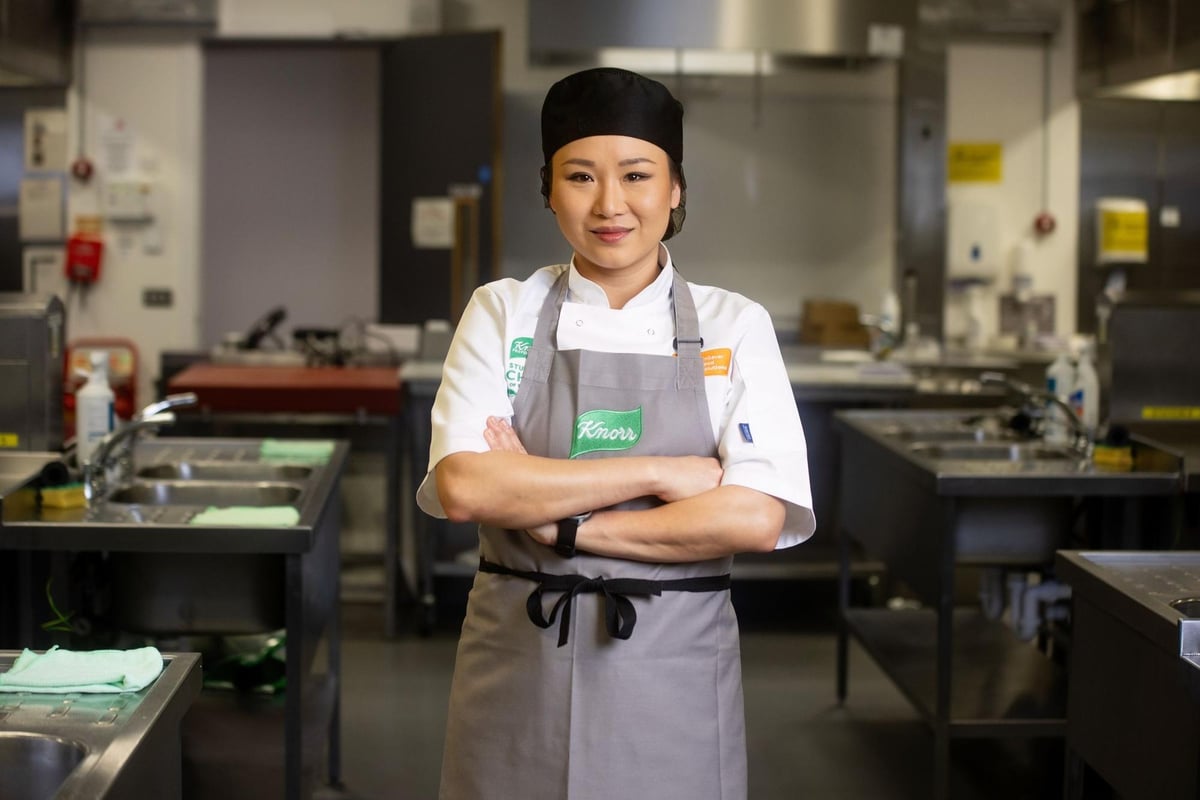
IF I were to choose the last meal of my life, there are quite a number of favourites on my list, especially those comprising my mother’s heirloom recipes. It is near impossible to choose just one, but if I had to pick a few, one of those dishes would be nombu kanji – her version of the popular bubur lambuk. A savoury rice porridge often consumed for sahur and breaking fast during Ramadan, the history of nombu kanji’s wholesome presence dates back to South India.
There are documentaries on the history of Tamil Muslims that tell of the traditions of making nombu kanji as a community meal, which is age-old in the region. Made with rice, lentils, spices and vegetables as well as meat (chicken, beef or mutton), it is prepared daily in bulk at the mosques (to be distributed to the poor as well as the general population) and in Indian Muslim households. More importantly, underneath the simplicity lies a complex, deeply satisfying culinary experience.

On any regular day, it’s like a warm hug in a bowl thanks to the aromatics like ginger and garlic, fenugreek, black peppercorns and lemongrass as the backbone to this dish. I omitted the lentils this time. My nombu kanji is based on my mother Nisha’s recipe and that of her ancestors, with a link to our Tamil Nadu heritage and style of food preparation.
Nombu kanji is somewhat reminiscent of briyani rice in its fragrance and character, but it is a lighter version that you can easily slurp and digest, especially after hours of fasting. You can always add briyani masala if you prefer. This recipe calls for soup powder instead, which is basically ground coriander, turmeric, fennel, cumin, cinnamon, cardamon and white pepper, unlike garam masala, which has dried chilli and black pepper.
My mother, now 81, told me a story about her fond memory of the dish, which has a steep history back in the day when both my parents grew up in their urban kampung on Transfer Road, George Town, on Penang island. In the late afternoons during Ramadan, my grandmother would give her one of those enamel kole (vintage mug with the lid) to take to their local mosque and bring home some porridge for the family. The ingredients for Nisha’s Nombu Kanji are widely available.
“We didn’t have fancy food containers back then; it was a joyful occasion to walk over and get the kanji,” she shared. The key to making a successful batch of nombu kanji is the drinkable consistency; it shouldn’t be too thick. This recipe calls for partially cooking the rice first before adding it to the spice mix.
Never use basmati rice to cook porridge, as it has a higher fibre content and is less starchy. I use Jasmine rice, which has a floral aroma and gives a sticky, creamy texture to the porridge. As the rice thickens quickly, you can always add more hot water to thin the porridge and prevent it from burning.
Fresh coconut milk gives the dish an added creaminess. The ginger-garlic paste is essential to aid digestion and provide a flavour bomb. Like in most South Indian curries, coriander is the star herb for colour and flavour.
If you dislike spring onions, you can substitute mint leaves for additional fragrance. As for the meat, I use chicken thigh, which has more flavour from the bones. Nisha’s Nombu Kanji Ingredients for rice 1⁄2 cup jasmine-scented rice 3 cups water 2 Pandan leaves 1.
5cm ginger, sliced 1 tsp whole black peppercorns Pinch of salt Ingredients for soup 2 tbsp peanut oil A thumb of ginger, finely sliced 1 stalk lemongrass 1⁄2 tsp fenugreek seeds 5 shallots, finely sliced 1/2 tsp peppercorns 2 tbsp ginger-garlic paste (made by blending one garlic bulb and a thumb of ginger into a paste with 2 tbsp water) 1 ripe tomato, chopped 1/2 cup water 1 chicken stock cube 2 chicken thighs, deboned and chopped (include the bones for added flavour) 1 tsp soup powder 1 tsp salt 1 carrot, cut into small cubes 1 cup of water 1⁄2 cup fresh coconut milk 1⁄2 tsp turmeric powder 2 cups water 2 sprigs fresh coriander leaves 2 sprigs spring onions Directions Wash rice two or three times to remove impurities. Soak washed rice in water with pandan leaf, peppercorns and salt. On low heat, simmer for 10 minutes until rice is a little soft.
Turn off heat and set aside. In a deep pot on medium heat, put the oil and saute ginger, lemongrass and fenugreek seeds until they crackle. Add the shallots and peppercorns and saute for a few minutes.
Add the ginger-garlic paste and mix everything well while making sure not to burn the mixture. Throw in the chopped tomatoes and stir again. If the mix is dry, add some water.
Cook until the tomatoes are soft. Add the stock cube and stir well. Add the chopped chicken, and include the bones.
Simmer over medium heat for a few minutes, before adding the soup powder and salt. Mix until everything is well combined. Next, add the cubed carrots and water.
Simmer over medium heat with a lid on for a few minutes. Add the soaked rice, including the pandan leaf, ginger and peppercorns, and three cups of water. Turn the heat down to low and stir everything together until the rice breaks down but is not too mushy.
Add the coconut milk and mix, followed by turmeric powder. Add water and stir. Cook the porridge for about 15 minutes until some of the water has evaporated.
Stir occasionally to prevent burning. Taste to ensure there is enough salt. Discard pandan leaf, lemongrass and bones.
For garnishing, chop the coriander and spring onions and serve the porridge hot..















